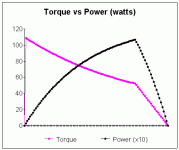Freddyflatfoot
1 kW
Hi.
After researching some different SRAM products, I came across this interesting looking geared hub motor from SRAM.
The reason I say it is interesting, is that it combines a hub motor, and an 5 speed internal geared hub.
Not sure of the performance aspect of the motor, but wouldn't expect too much from the relatively small 16.8v NiMH battery, but the concept does look sound.
Also looks like the controller is built into the motor, so dunno how modding the motor would go.
Would probably suggest that the motor is on the low end of the power scale.
Has anyone come across this motor in their travels?
The SRAM site is the only place I have seen it.
Here is the site, click USA, then Products, and the SPARC will be on the drop down list,
http://www.sram-imotion.com/
Cheers!
After researching some different SRAM products, I came across this interesting looking geared hub motor from SRAM.
The reason I say it is interesting, is that it combines a hub motor, and an 5 speed internal geared hub.
Not sure of the performance aspect of the motor, but wouldn't expect too much from the relatively small 16.8v NiMH battery, but the concept does look sound.
Also looks like the controller is built into the motor, so dunno how modding the motor would go.
Would probably suggest that the motor is on the low end of the power scale.
Has anyone come across this motor in their travels?
The SRAM site is the only place I have seen it.
Here is the site, click USA, then Products, and the SPARC will be on the drop down list,
http://www.sram-imotion.com/
Cheers!





